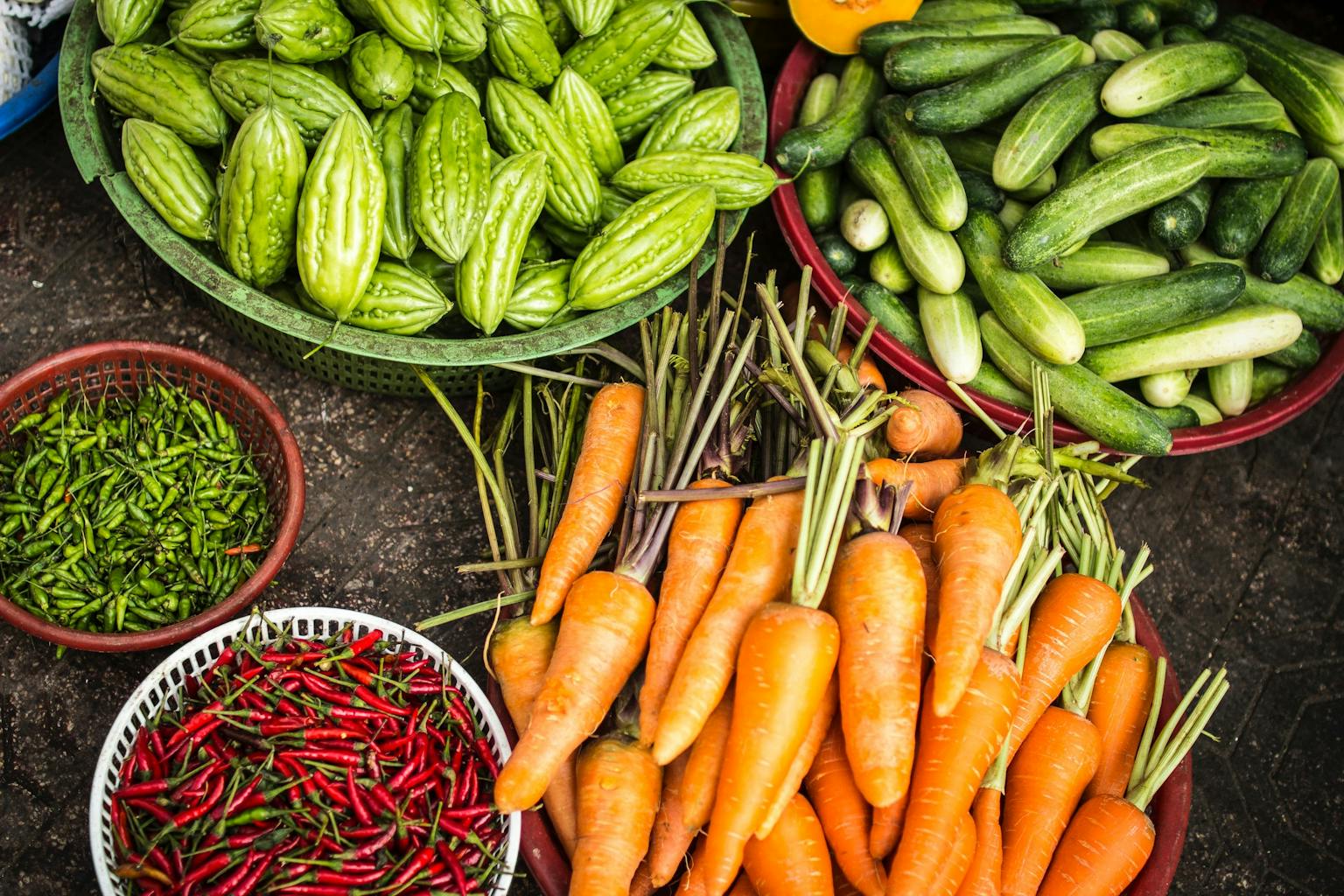Believe it or not, you can experience Singapore on a budget! There's no need to sacrifice meals or sell plasma to explore Southeast Asia's interesting little city-island-country. Discover the best Singaporean cuisine in a not-so-pricey.
Unless the day comes when humans find a way to convert daylight into nutrients thru photosynthesis, we’re exceedingly plenty stuck paying for food in order to stay alive. With restaurant fees rising regularly in Singapore, let’s hope you have decent cooking skills.
Many personal finance articles speak about how cooking at domestic in Singapore saves money. While it does in the long run, the preliminary expenses can be high.
How Much Does It Cost to Cook at Home in Singapore?

When most people first work out the cost of a meal, the budget plan goes something like this:
- Mixed vegetables S$5
- Fish (fillet) S$9
- Chicken (whole) S$8
- Cooking oil (2 litres) S$5
- Rice (5kg) S$12
All in, you can have enough food for three or four days for S$39, and the rice and oil will last much longer than that. But here’s the thing: that’s the way it works after you’ve been cooking for a while.
If you have never cooked before, here’s what the budget really looks like at the start:
- Mixed vegetables, which your children refuse eat so you have to toss the previous batch, and buy new vegetables that they will eat – S$10
- Fish, of which you need three fillets, because you burned the previous one – S$27
- Roasted chicken from the coffee shop, because you gave the previous whole chicken to a neighbour, after realising you have no idea how to use that chopper, and would have just end up with badly shredded chicken due to your cutting skills – S$12
- Cooking oil price remains the same, but you’ll probably be using more of it due to errors. Also, you never knew a decent non-stick wok really can cost upwards of S$30
- Rice prices remain the same, but then you realise you’ll need a rice cooker, so you need to fork out an additional S$50
And right when you check the recipe book, you realise you also need six or seven different herbs, a blender, a convection cooker, a toaster-oven, flour, eggs, milk, cut chillies, etc., etc.
Now over time, if you keep cooking, this will be less of a shock. You will gradually accumulate the equipment and spice cabinet that every decent cook has. But at the very beginning, the initial setup cost can be much higher than you imagine.
It’s not as simple as the cooking shows or recipe books would suggest, especially if you’re cooking for a whole family. Some of the key factors to consider are:
Mistakes Cost Money
If you put sugar instead of salt in the soup, or leave a whole salmon on the pan for too long, you need to start from scratch. That’s an expensive mistake.
Your Family Might Not Like Your Cooking (Especially the Children)
It hurts when you bought and roasted a whole chicken, but your family finds your beginner-level cooking to be, well, inedible. Many people often give up because they get tired of trying to force their cooking on the family, especially the children.
Equipment Can Be Expensive, and Discount Versions Are Worse
When it comes to cooking equipment, discounts are for those in the know. A cheap knife or wok can end up costing more money, when you throw them out and replace them. It’s more than likely, however, that an amateur chef will overspend on branded equipment.
The Biggest Cost Is Time

Cooking is a skill that takes time to learn. It is not like riding a bicycle, which can be managed in a day or two. This is the number one cost that’s often overlooked. Every dish is different and represents a new learning curve. On top of that, consider that even experienced home cooks can take an hour to prepare a meal. If it’s your first time, you can expect to spend two to three hours on something as simple as lemon chicken and rice. Yes, you can prepare something quicker like sandwiches, but you can’t be having that for dinner all day, every day. And microwaved food doesn’t count as cooking!
If you’re working, it may not be an option rush home from the office at 4 or 5 pm, in order to get dinner ready by 7:30 pm sharp. Don’t say you can pre-cook it in the morning, because it’s hard to do that also when you need to be at work by 9 am. Learning to cook also interrupts other opportunities, such as starting a side-business or doing a part-time job.
Those Who Need to Cook Are Often the Least Inclined to Do So

If you’re financially stable and can afford the “start up costs”, it’s worth learning to cook. The savings will more than make up for the costs in the long run.
However, families on a tight budget (e.g.S$1,200 a month) might not be able to afford the initial equipment; and they certainly can’t risk wasting food. When your budget for the day is S$3 a meal, a burned beef patty is something you’ll have to choke down, as you can’t afford to make another.
This means that you should learn to cook while you have the time and money. Later on, if you ever get in a dire financial situation, you’ll have the means to save money via home cooked meals.
Frozen Meat Over Fresh Meat
If you’re serious about saving money on food, you’ll reduce your meat intake. But okay, we understand not everyone wants to have a slender figure completely devoid of muscles.
If you have to buy meat, stay away from the deli counter as that’s where it’s most expensive. But don’t always assume the fresh meat is necessarily cheaper than frozen, either. Many people think frozen meat is somehow less nutritious than fresh meat, but it’s not really true. As the freezing locks in nutrients instantly, it can actually be even fresher than produce that has had to travel over long distances to get to the supermarket. But what you really care about is the price, right? Well, a huge 300g slab of salmon at NTUC Fairprice costs $6.95. If you have any experience buying fresh salmon at NTUC, you’ll know it’s very hard to find even a small salmon steak for under $9.
Make Soups in Bulk and Then Freeze Them
If it were so easy to freeze everything that came out of your kitchen, we’d be thawing frozen fried rice and Hokkien mee in the microwave. Unfortunately, some foods are just disgusting when frozen, which also means you can’t make them in bulk at the start of the month and expect them to be edible on those days when you’re too tired to cook.
Soup, on the other hand, is almost always fine to freeze. Whether you make them in the slow cooker, the blender or just boil the hell out of them, soups are super convenient to store. Just pour them into plastic containers and then place them in the freezer.
So the next time you make soup, don’t just make enough for that night. These things can last forever (or at least more than a month), so if you make big batches of different types of soup you’ll eventually have a big menu of instant meal options in your freezer.
When you’re hungry, remove them the way you would an ice cube (you might have to let them thaw for a few minutes first, then they’ll slip out), place them in a pot and turn up the heat. Faster than instant noodles and more satisfying if you actually care about your health.
Challenge Yourself to Use All Leftovers
Seriously, some people don’t even try to use their leftovers. You might have bought a carton of coconut cream to add to your homemade laksa, but after making the dish it just slowly dies in your fridge until it finally has to be thrown out.
You’re definitely not going to use your leftovers if you leave things to chance. You have to deliberately plan to do so.
Every week or so (more often if you cook daily), declare a “leftovers day” on which you will attempt to use up all the leftovers in your fridge.
It’s really not that hard as virtually everything, even stale bread, can be made use of, so long as it’s not completely rancid. (In case you're wondering, stale bread can be used to make meatballs.)
Bring Snacks When You Go out so You Don’t Get Hungry and Eat Out
You might have planned a beautiful menu for tonight, complete with dessert and candles. But all it takes is an MRT breakdown that leaves you stranded for an hour or another of those 6pm requests from your boss to ruin your grand plans.
When your stomach is threatening to self-digest, it takes an iron will not to succumb to the lure of eating out. And let’s face it, after a gruelling day at the office/on the MRT, you barely have the will to live, let alone to cook.
Note: When cooking, constantly opt to make from scratch instead than purchase pre-made
Singaporeans reading remote places continually get excited when their dad and mom send them packets of on the spot laksa flavouring or fowl curry. It is very tempting to just purchase that packet of “pad thai” flavouring, due to the fact who doesn’t like pad thai, right? But being overly reliant on pre-made components and foods can compromise your health as such “food” includes a entire host of preservatives and chemicals. There’s almost usually a way to make something from scratch. If you genuinely desired to, you should make inexperienced curry on your very own by using pounding the ingredients manually with a pestle. You can make your very own sambal with the aid of inserting all the elements via a blender. Finally, as convenient as they might be, avoid pre-made meals and TV dinners like the plague. It might be so effortless to stick them in the microwave when you get lower back from work at 9 pm and are too worn-out to cook, however keep away from ingesting processed junk like that every day.





















Please leave your knowledge and opinion!